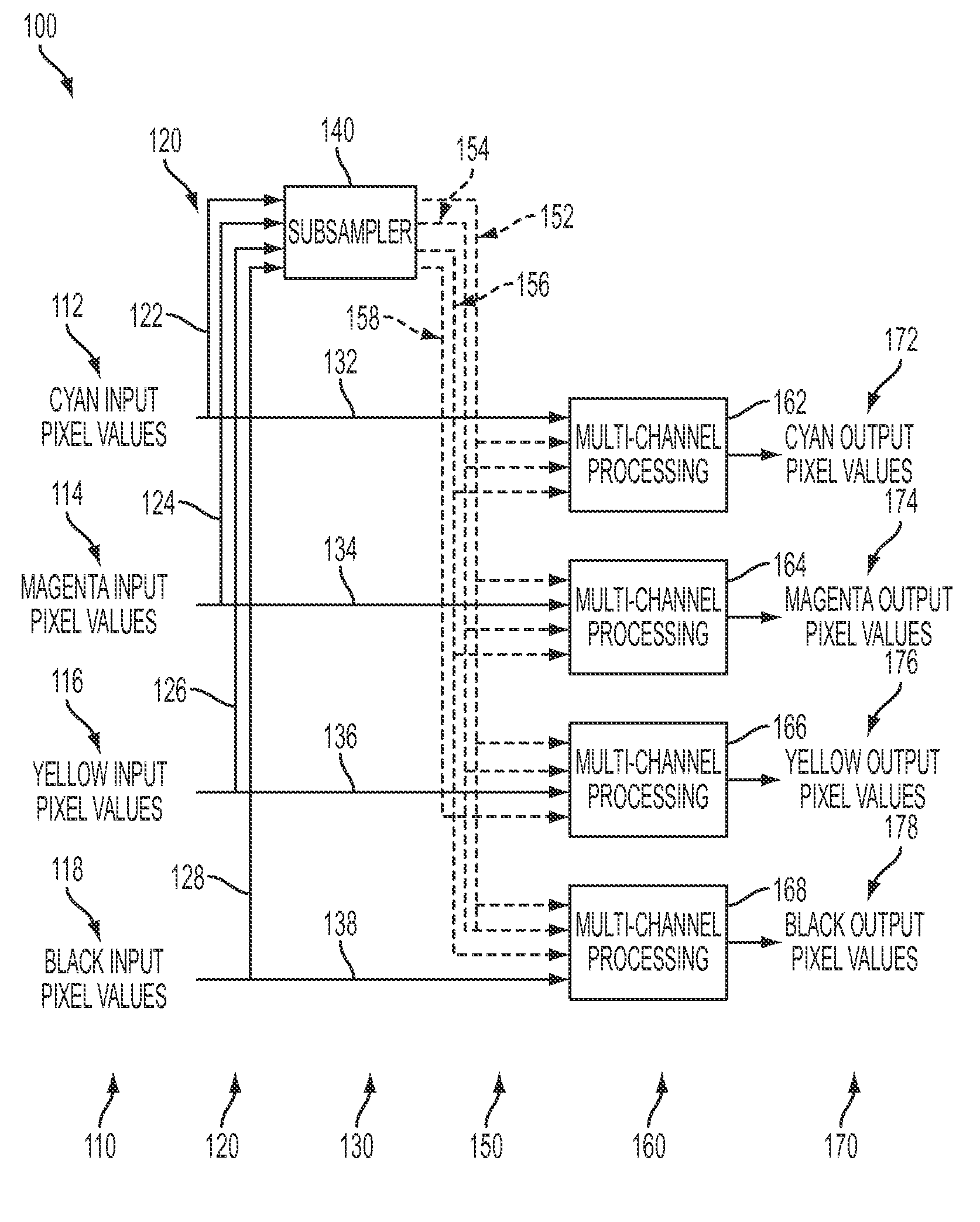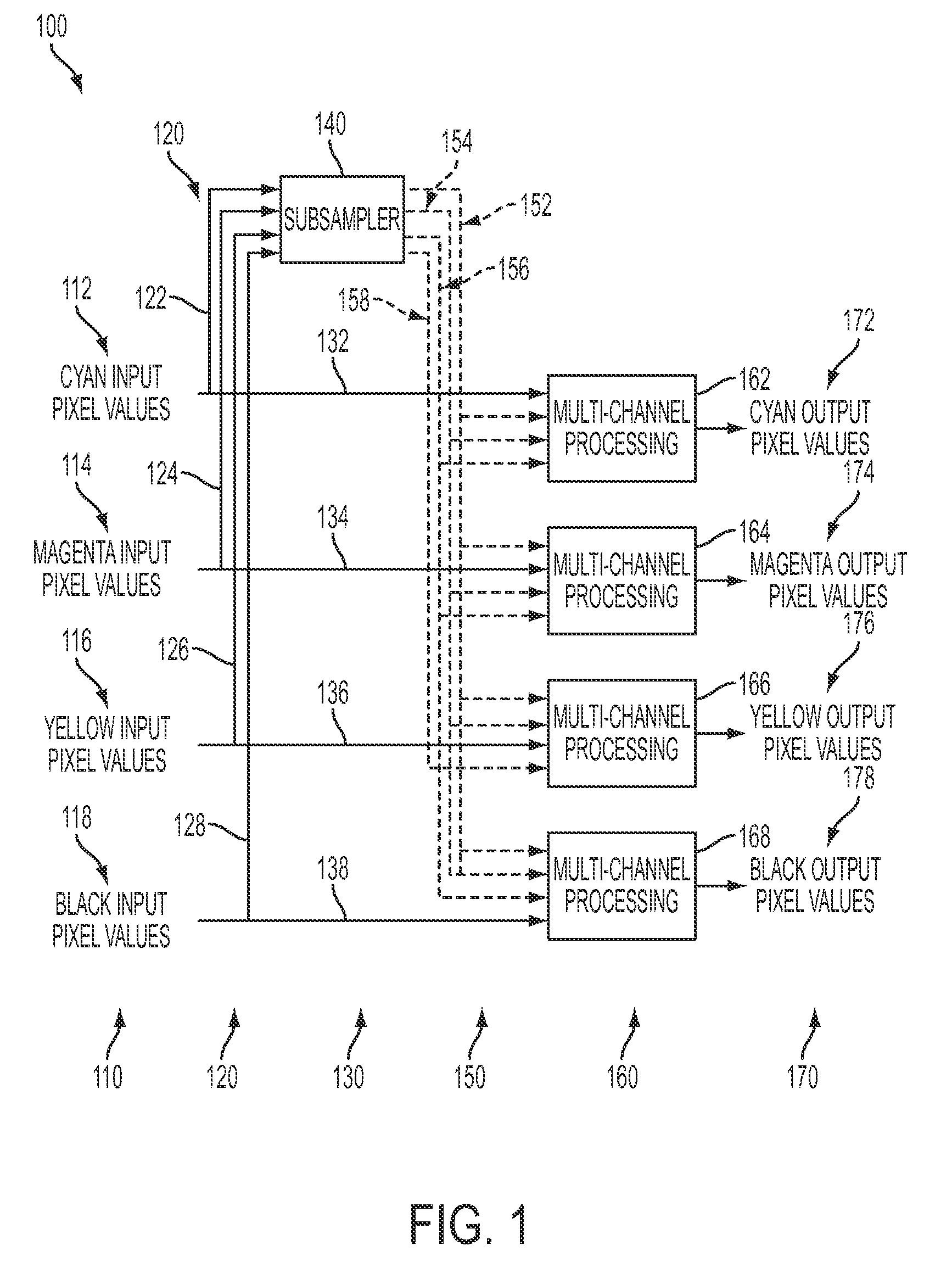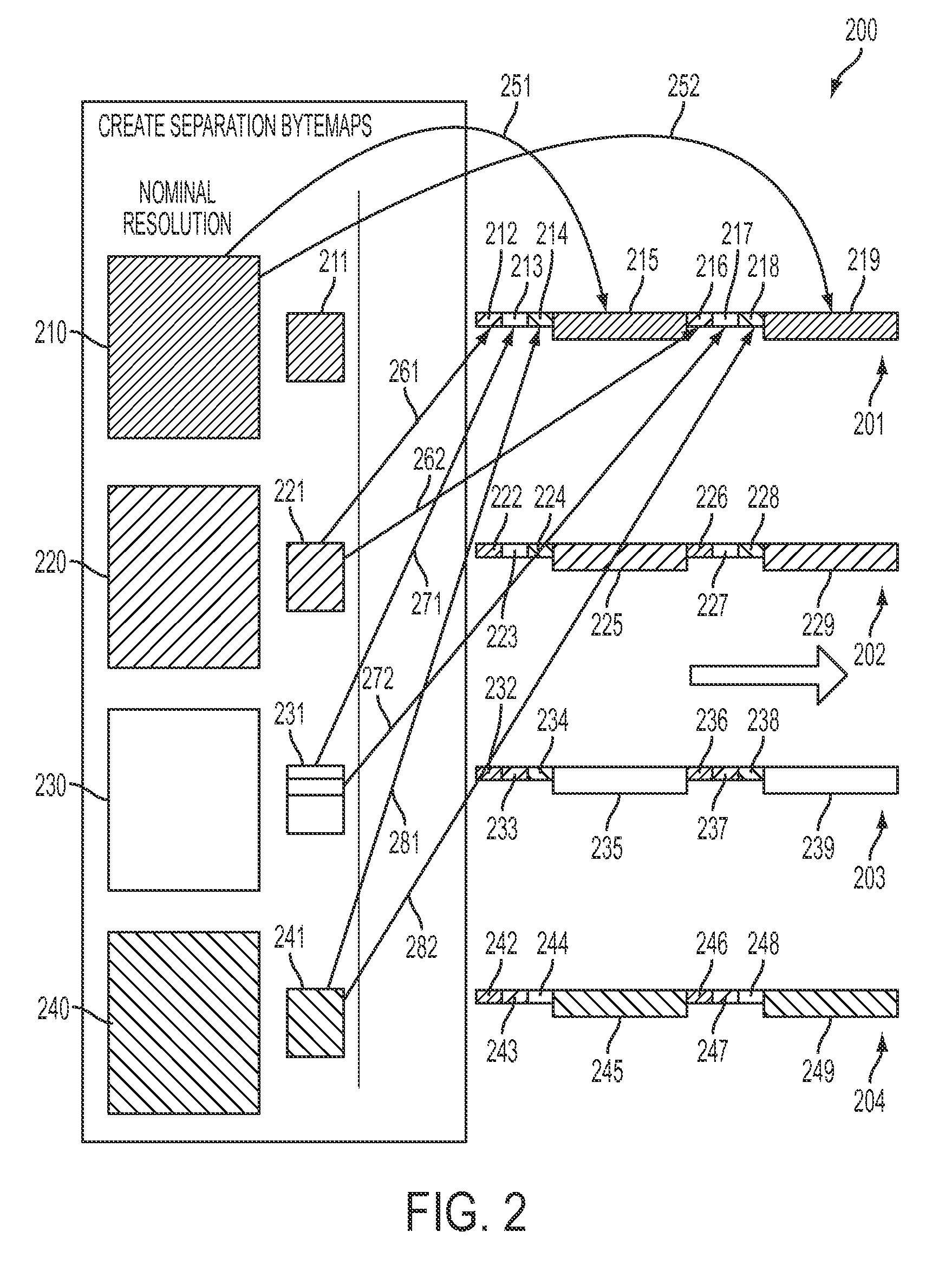Data architecture for mixed resolution interleaved cross-channel data flow and format
a data architecture and cross-channel data technology, applied in the field of image separation based multi-color document processing systems, can solve the problems of reducing and excluding processing calculations, so as to reduce the cost of memory components. , the effect of reducing the amount of buffering
- Summary
- Abstract
- Description
- Claims
- Application Information
AI Technical Summary
Benefits of technology
Problems solved by technology
Method used
Image
Examples
Embodiment Construction
[0019]Several embodiments or implementations of the different aspects of the present disclosure are hereinafter described in conjunction with the drawings, wherein like reference numerals are used to refer to like elements throughout, and wherein the various features, structures, and graphical renderings are not necessarily drawn to scale. Certain embodiments are illustrated and described below in the context of exemplary multi-color document processing systems that employ multiple xerographic marking devices or stations in which toner marking material is first transferred to an intermediate structure and ultimately transferred to a final print medium to create images thereon in accordance with a print job. However, the techniques and systems of the present disclosure may be implemented in other forms of document processing or printing systems that employ any form of marking materials and techniques in which marking device fields are used for material transfer, such as ink-based pri...
PUM
 Login to View More
Login to View More Abstract
Description
Claims
Application Information
 Login to View More
Login to View More - R&D
- Intellectual Property
- Life Sciences
- Materials
- Tech Scout
- Unparalleled Data Quality
- Higher Quality Content
- 60% Fewer Hallucinations
Browse by: Latest US Patents, China's latest patents, Technical Efficacy Thesaurus, Application Domain, Technology Topic, Popular Technical Reports.
© 2025 PatSnap. All rights reserved.Legal|Privacy policy|Modern Slavery Act Transparency Statement|Sitemap|About US| Contact US: help@patsnap.com



